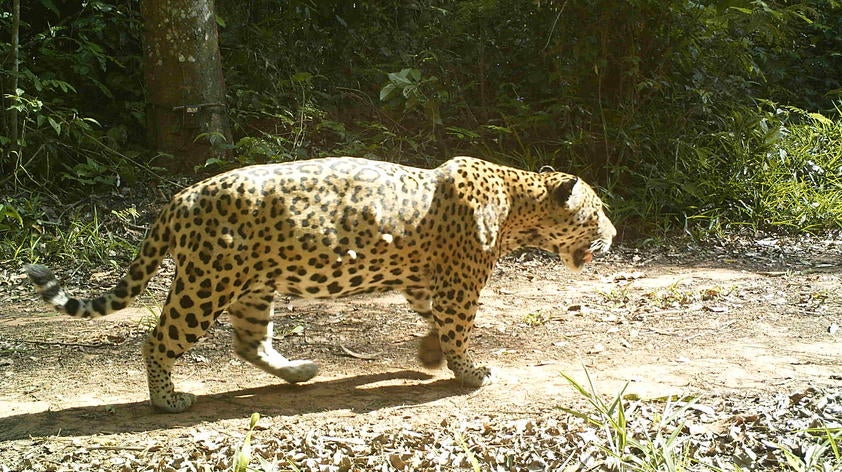
What's on the menu?
Solitary and elusive, the largest cat in the Americas has proven difficult to study. Jaguars are known to be apex predators, but the exact contents of their diets are often unclear, especially in dense or remote habitats where observation is difficult.
A decade ago, Samia Carrillo, working with our Population Sustainability team, collected noninvasive fecal samples from Peru. The samples were collected in the Tambopata Natural Reserve, as well as in logging concessions. The goal was to collect samples left behind by jaguars, and to use these samples to gain insight into jaguar diets in pristine forest versus human-modified habitats.
After years of waiting for export permits, we received the samples in our Conservation Genetics lab in 2018. We wanted to find out more about jaguar diets and whether such old samples could even provide the information we needed for the study.
The samples arrived in ethanol, but we had little information on the conditions they had been stored under for the past ten years.
After much trial and error, we were able to extract DNA from a fraction of the samples, and proceed to the next step: identifying prey. We used an approach called metabarcoding, which is a sequencing method that involves using a universal PCR primer to amplify DNA from a chosen gene. This gene works as a barcode for identifying species.
After sequencing, a bioinformatics pipeline can match each DNA barcode to its corresponding species, giving us information on the prey items in each sample. In addition, this method confirms the species of the predator, as there is an ample amount of host DNA in each sample.
After running the DNA libraries through our sequencer, we were confronted with some interesting results.
Not only were we able to identify prey, but we also found that some of the “jaguar” samples were not from jaguars at all! Some of the samples came from other big cats in the area, including ocelots and pumas.
Preliminary data are already showing some trends; jaguars and pumas ate large prey such as tapirs and peccaries, while ocelots tended to eat smaller prey such as rodents and opossums.
Jaguars are listed as near threatened, in large part due to human pressures. The expansion of agriculture and mining developments into the Amazon rainforest has fragmented jaguar habitat and led to a significant population decrease.
Understanding jaguar diets is important moving forward because it will help inform not only conservationists but also policy makers on how to best preserve the ecosystems that jaguars rely on for survival. As this project continues, we hope it will contribute to the preservation of this important keystone species.













